Dervish Dreams and Turkish Delights
Sleeping in caves in Cappadocia (Kapadokya).
I think someone’s been messing with the dials of time. There’s no way a month has passed already since I returned from abroad…
Anyway, after a wonderful week in Kazakhstan amid the gray (but sunny) soviet urban rigors of Almaty, we made the right choice for the Turkey part of our trip by visiting Kapadokya first…before braving the frenetic bustle of Istanbul.
Surviving the 7-hour redeye from Almaty to IST, followed by a short hop to Nevşehir, we rented a car in the quaint rural airport and drove through rolling farmland toward our one-night reservation at a cave hotel in Cappadocia.
In a slight daze, we drove into the small bowl-shaped town and gazed all around at the windcarved pillars of tufa stone and the honeycomb caves built out into hotels and restaurants catering to travelers from around the world, and located our hotel.
Touristy? Yes. Worth it? Absolutely yes.
We found the best cave hotel in Cappadocia (Kapadokya)
Almost before we even settled in at the Anatolian Houses, we extended our stay another night, at the cost of one of our nights in Istanbul. We couldn’t resist the mediterranean energy of the place, the view. The cheerful and attentive (but not robotic or clingy) service.
And at that price? Well…the only downside was, time was running short and couldn’t stay longer.
Someday when I have the funds, Kapadokya will be an idyllic place to spend a few weeks on a writing retreat.
There’s much to explore, including nearby Göreme National Park & The Rock Sites—home to numerous elaborate cathedrals and living spaces carved into the living caves by Byzantine monastery dwellers centuries ago, with precise lines and perfect domes and pillars like inverted mosques. Plus long dining tables hewn right into the rock, and 1000-year-old biblical frescoes preserved in astonishing color inside the cool dry caves. I definitely want to commune with those ghosts a bit longer.
But until then, I guess I’ll just have to be content with delicious memories and the scant photographic evidence we remembered to snag.
Rise and shine (Muslim style)
The muezzins here take great pleasure, you can tell, in the day’s first call to prayer. Broadcasted via loudspeakers atop every mosque’s minarets like civil defense sirens, the Fajr wails up shortly after 4am this time of year.
Haunting, eerie, somewhat atavistic—it’s also laced with discernibly more glee than the other 4 prayertimes. Inspired, one imagines, by more than just gratitude for another new day, in this town of unsuspecting tourists.
But waking up with the Fajr means you have ample time to go find the hotel’s coffee machine and get to the rooftop before sunrise, to watch the daily ascent of hot air balloons—burners flaring here and there in the predawn dark like fireflies calling out their mysterious morse messages.
And being from Albuquerque—home of the worldfamous Balloon Fiesta—we felt a new special kinship with this faraway and foreign land.
Dance like a dervish
One night we bought tickets for a public dervish ceremony in an old stone caravanserai—and managed to get in and find seats before the massive charterbus disgorged its teeming horde of tourists.
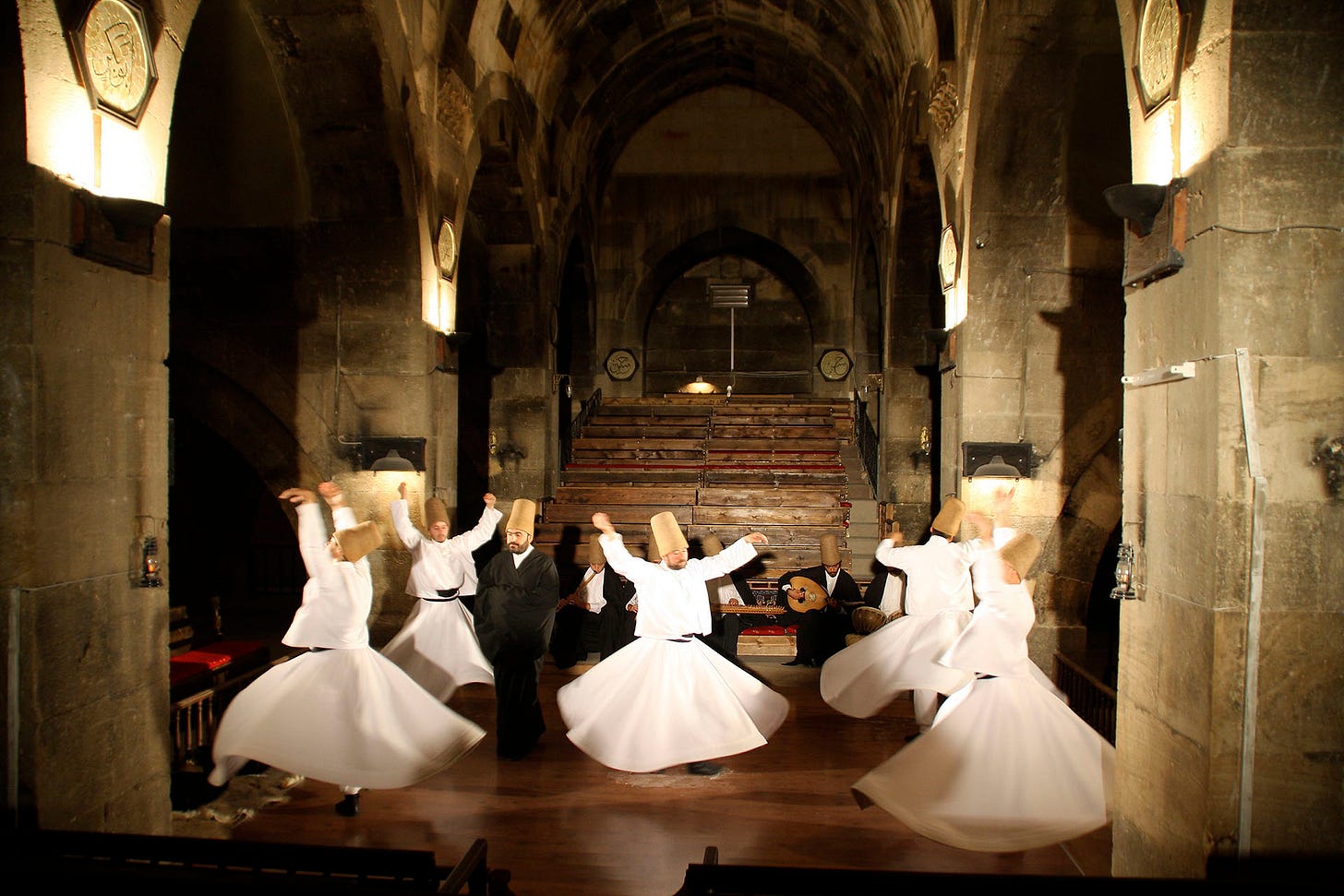
Turns out dervishes dance slow and deliberate like—not the carefree wild whirling I’d always imagined, based on the idiom.
Anything but feverish and frenzied, the dervish dance is enchantingly meditative and contemplative. A steady measured twirling—mentally and physically focused on the basic intension of one unifying premise: “The fundamental condition of our existence is to revolve.”
Everything in the cosmos is spinning…from the biggest supercluster of galaxies, down to the tiniest quark. Revolution means massive upheaval and change…but it also just means one turn on a spinning wheel.
The dervish dance—passed down from Mevlâna Rumi in the early 1200s—is a symbolic and literal joining in the cosmic revolution. A kinetic prayer of gratitude and awareness. Beginning with silence…growing through drumbeats representing Divine Order…gaining life as a reed flute sings of the Divine Breath (aka pneuma)…and then blooming with the broad sweeping skirts of dervishes whirling through the Semâ ceremony, ritualistically contemplating life, unity, and existence.
On his head, the whirling Semâzen wears his ego’s tombstone. While the flowing white garment is his ego’s burial shroud. Whirling counterclockwise like the planet; right palm receiving the sky above, the left turned to the earth below. Embracing all of creation with affection and love.
Rumi’s 7-part advice for mystic ascension:
In generosity and helping others, be like a river…
In compassion and grace, be like the sun…
In revealing others’ faults, be like night…
In anger and fury, be like the dead…
In modesty and humility, be like the earth…
In tolerance and depth, be like the sea…
Exist as you are, and be as you seem…
And through it all, 5 dancers unceasingly revolving in unison; tracing the corners of a square spotlit stage, penned in on 3 sides by bleachers full of spectators to the sacred event.
It’s mesmerizing to watch, even hypnotizing. And if you’re really paying attention—it’s profoundly spiritual. Transportive and deeply moving on an ego-busting level.
So much so that I didn’t even register when the event host quietly announced, “Now you may take photos if you wish—”
—until suddenly dozens of screens appeared simultaneously out of nowhere, myriad disembodied glowing rectangles surrounding us in the chapel dim, jostling for vantage and angle to better capture the experience.
The spell shattered instantly—replaced by the plummeting sensation of waking up in some Black Mirror episode, as the trapped and doomed hero.
Thankfully though, Rumi’s ancient magic persisted long after the nightmare feeling faded to a gossamer fog…and it still warms my soul to think about, even a month later and many long leagues away.'


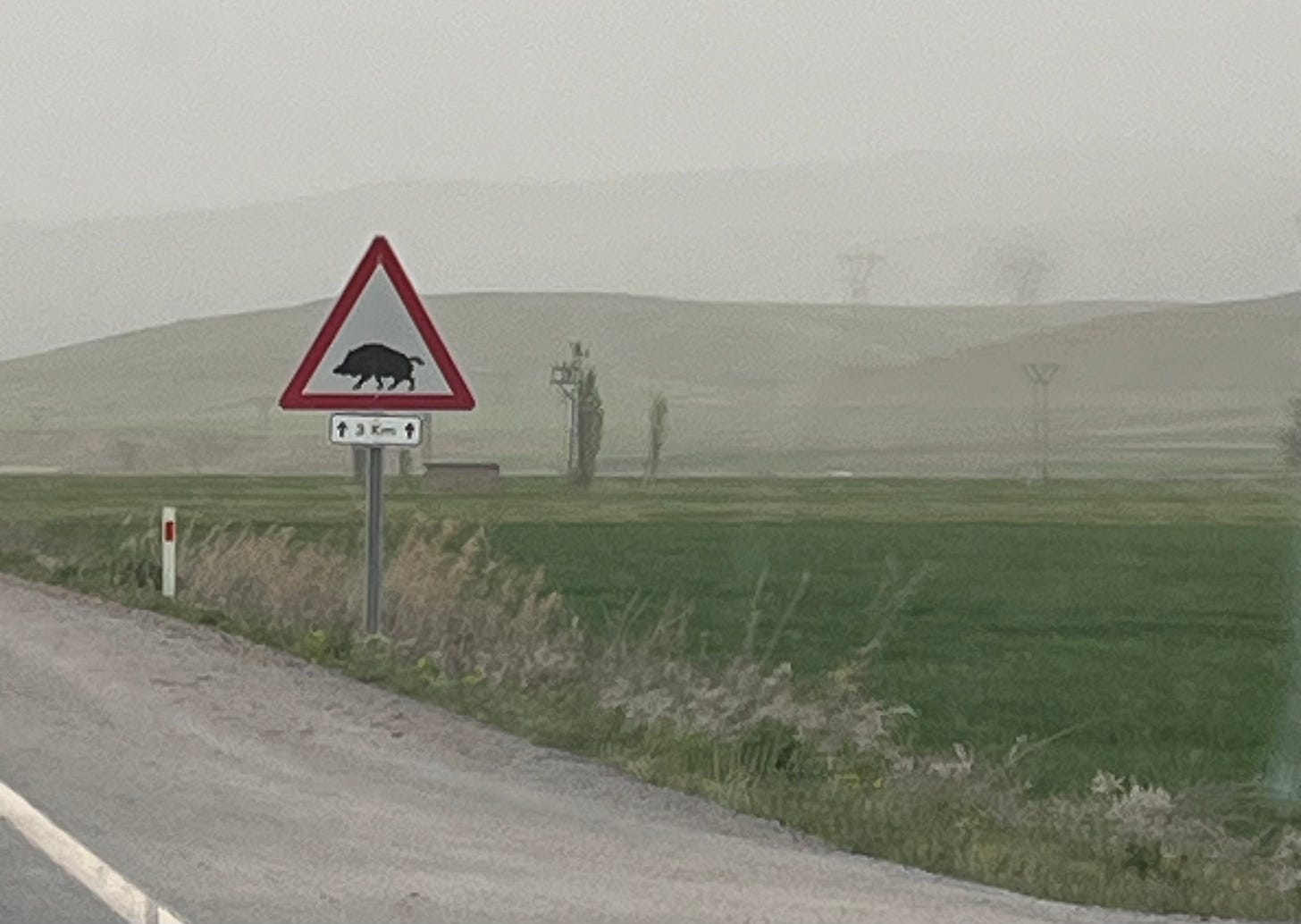
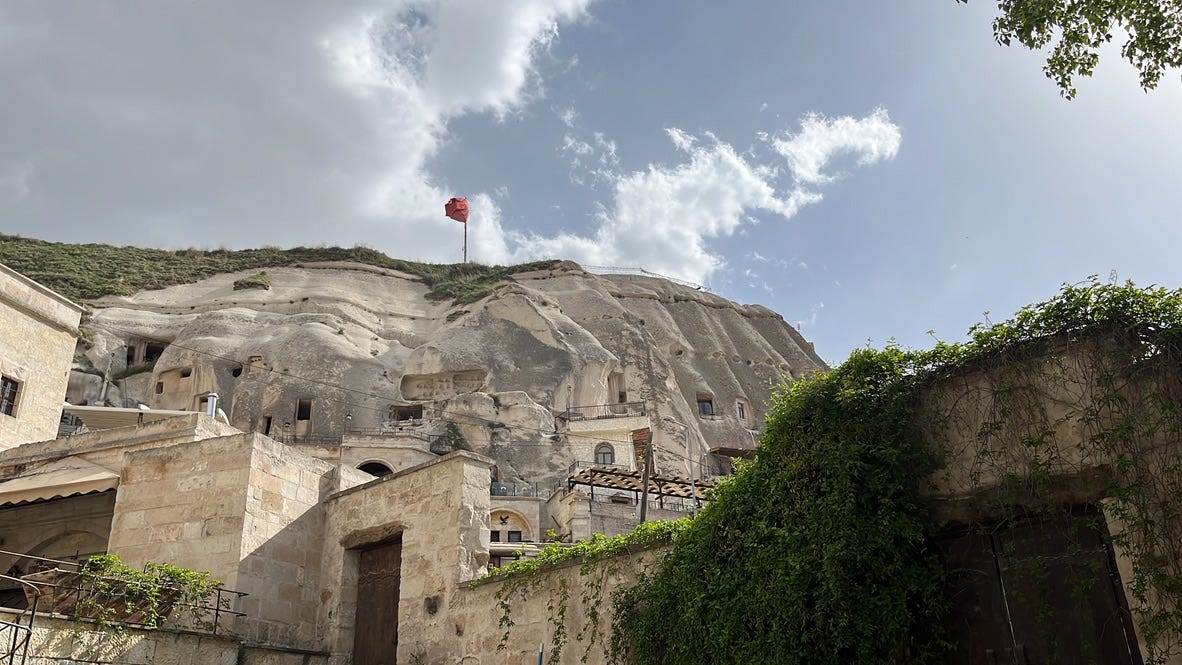
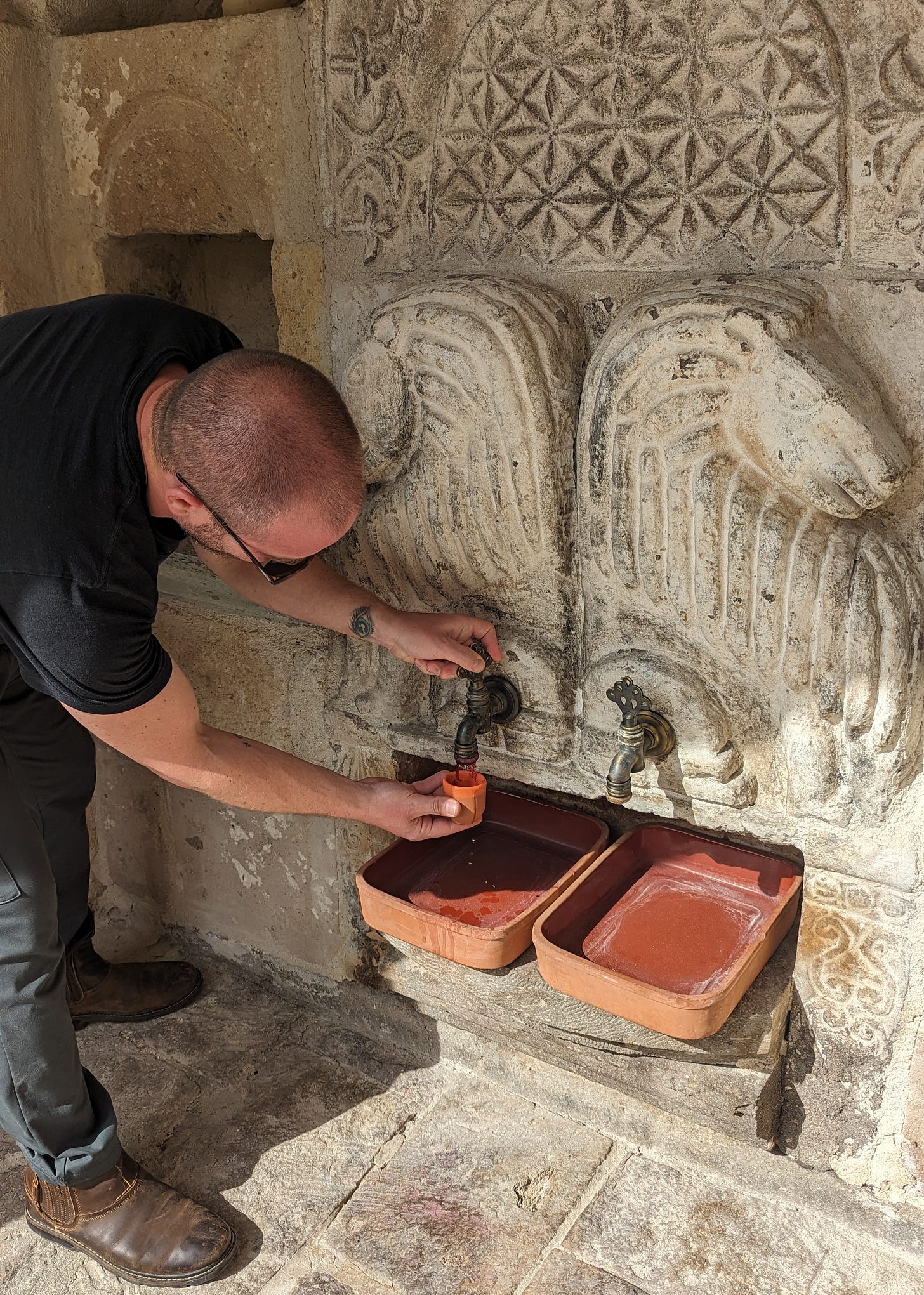
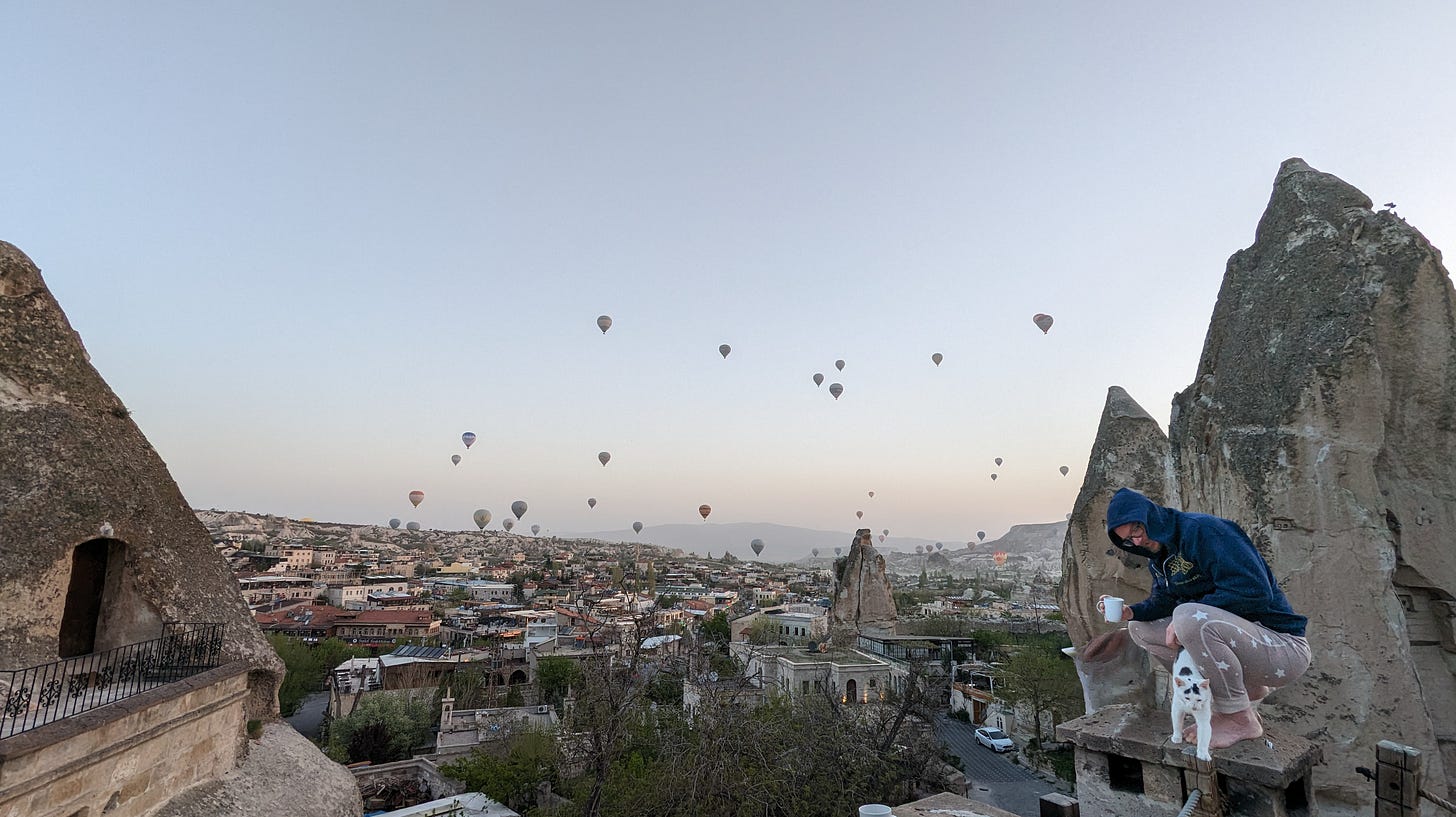
A kinetic prayer of gratitude and awareness 🙏🙏so beautiful